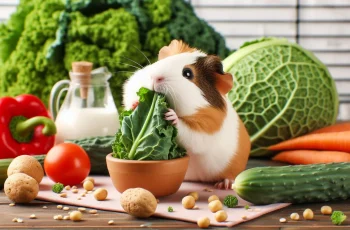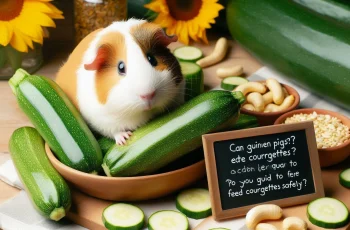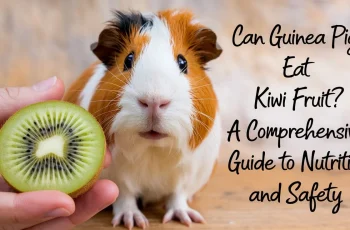Can Guinea Pigs Eat Kohlrabi?Yes, guinea pigs can safely eat kohlrabi, including both the bulb and leaves, but only in moderation. This crunchy Brassica vegetable offers valuable nutrients but also presents a few concerns that pet owners should be aware of. Offered wisely, it can be a great addition to your guinea pig’s fresh food rotation.

Nutrition at a Glance (per 100g):
- Vitamin C: 62 mg – crucial for scurvy prevention, since guinea pigs can’t synthesize this essential vitamin.
- Fiber: 3.6g – helps promote healthy digestion and regular bowel movements.
- Calcium: 24 mg – necessary for bone health but may contribute to bladder or kidney stones if consumed excessively.
- Water: 91% – helps keep your guinea pig hydrated, especially in warmer seasons.
- Sugar: 2.6g – relatively low but still needs portion control to prevent weight gain or other issues.
Benefits of Kohlrabi for Guinea Pigs:
Feeding kohlrabi in small amounts can provide meaningful health perks. The high vitamin C content strengthens the immune system and supports general well-being. Its fiber aids digestion, while the low-calorie content helps with weight management. The high water content keeps guinea pigs hydrated, especially when they’re less inclined to drink from bottles.
Risks & Warnings:
Despite the benefits, there are some risks. The calcium and oxalate levels can be harmful over time, possibly leading to bladder sludge or stones, particularly in guinea pigs prone to urinary issues. Additionally, introducing kohlrabi too quickly may cause bloating, soft stool, or discomfort. Always introduce new foods gradually and monitor for adverse reactions.
How to Prepare & Serve:
- Wash thoroughly to remove pesticides.
- Peel the bulb—the skin is thick and fibrous.
- Chop into small, bite-sized pieces to avoid choking.
- Serve 1–2 tablespoons of raw bulb or leaves, once or twice a week, alongside other safe vegetables.
Recommended Veggie Rotation:
Pair or rotate kohlrabi with other guinea pig-friendly vegetables like:
- Bell peppers – high in vitamin C.
- Cucumber – very hydrating.
- Carrots – rich in beta-carotene but higher in sugar (feed sparingly).
- Romaine lettuce – fiber-rich and well-tolerated.
- Zucchini – low in calories and gentle on the stomach.
Conclusion:
Kohlrabi can be a nutritious and crunchy occasional treat for guinea pigs. Just remember: moderation is key. A balanced diet centered around unlimited hay, fresh leafy greens, and vitamin C-rich veggies, with kohlrabi as part of the mix, keeps your guinea pig healthy and happy.

FAQs:
Can they eat the leaves? Yes, in moderation—they’re safe and nutritious.
Can guinea pigs eat kohlrabi daily? No, limit it to 1–2 times weekly.
Should it be cooked? No, feed raw to retain nutrients.



